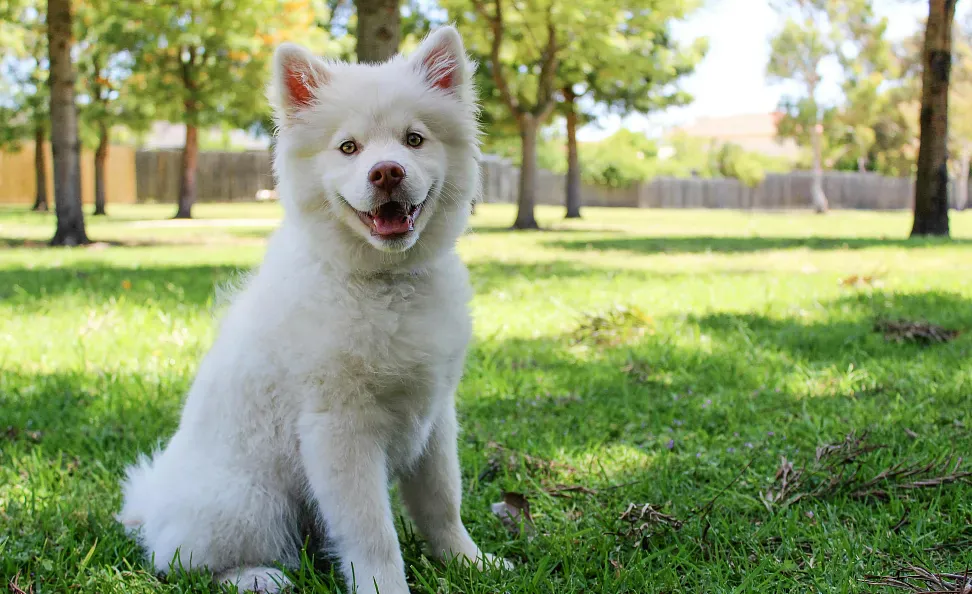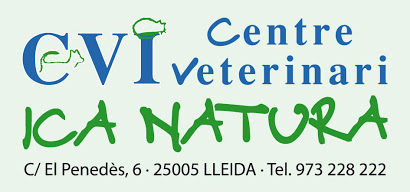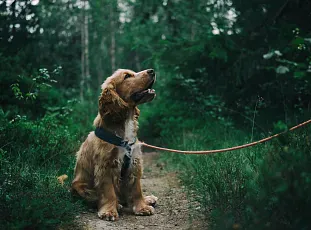The danger of the processionary moth for dogs

If you have a dog and you enjoy walking with it in parks, forests or areas with pine trees, it is essential that you know the danger posed by the processionary caterpillar. This caterpillar, which seems harmless at first glance, can cause serious damage to your pet's health.
Although their nests can be seen from late winter, the pine processionary caterpillar (Thaumetopoea pityocampa) is more common in the spring months. During these months, the caterpillars come down from the trees and move in a line along the ground in search of a place to bury themselves to complete their cycle. This characteristic way of moving is what gives them their popular name and it is at this stage when they represent a greater danger for our furry friends, since their natural curiosity can lead them to approach, sniff or even try to bite them.
The greatest danger of the processionary caterpillar is in the stinging hairs that cover its body. These hairs release a toxin that, upon contact, can cause severe allergic reactions in dogs. The most affected areas are usually the tongue, mouth and nose, although the eyes or skin can also be affected if they come into contact with the caterpillar.
The main symptoms after contact with the processionary caterpillar are:
- Excessive salivation.
- Inflammation of the tongue and mouth.
- Difficulty breathing.
- Vomiting.
- Fever and weakness.
- Necrosis of the tongue if action is not taken quickly.
First aid in case of contact with processionary caterpillar
If you suspect that your dog has had contact with a processionary caterpillar, it is vital to act quickly:
1. Prevent licking or scratching : This could spread the toxin to other areas and worsen the lesions in already affected areas.
2. Wash the affected area with plenty of warm water : cold water worsens the effects of the toxin, so it is most important to use warm water to try to remove the stinging hairs. Do not rub, let the water wash away the stinging hairs on its own.
3. Do not medicate your dog yourself : even if we know of previous cases or have previous experience of contact with the processionary caterpillar, we should not self-medicate our pets. Each case can evolve in a different way and requires an adequate assessment.
4. Go to the vet immediately : Although first aid is important, professional care is essential to treat possible complications.
The processionary caterpillar can cause irreversible damage if not treated in time. In severe cases, the inflammation can block the airways or cause necrosis of the tongue, which could require surgical interventions and even pose a risk to the dog's life. Therefore, do not replace a visit to the vet with first aid : this is only a temporary measure while you seek professional care.
How to prevent contact with the processionary caterpillar?
- Avoid walking in areas with pine trees during the risk period (late winter and spring).
- Keep your dog on a leash to prevent it from approaching caterpillars or their nests.
- Look at the ground and the trees: if you see rows of caterpillars or white bags in the tops of pine trees, stay away.
- Consult your veterinarian about preventative products or additional measures depending on where you live.
The pine processionary caterpillar is a real danger for our dogs, especially in spring. Being informed and acting quickly can make all the difference. Remember that, if you suspect contact with the caterpillar, the most important thing is to go to the vet quickly. Your best friend is counting on you to keep him healthy and safe.












